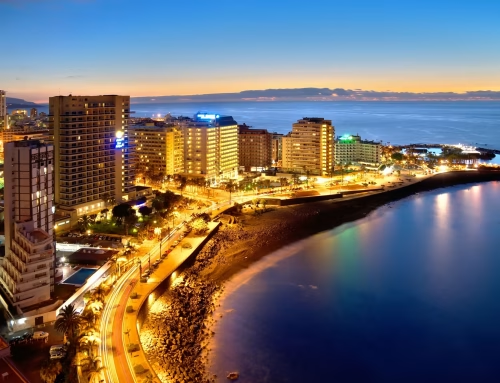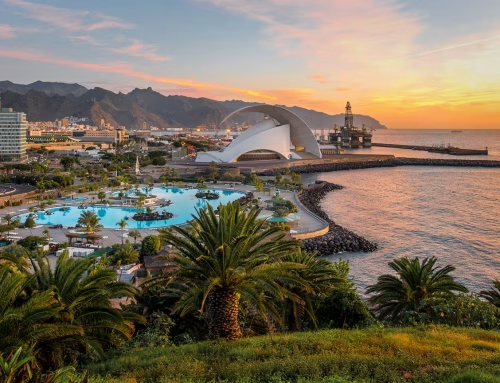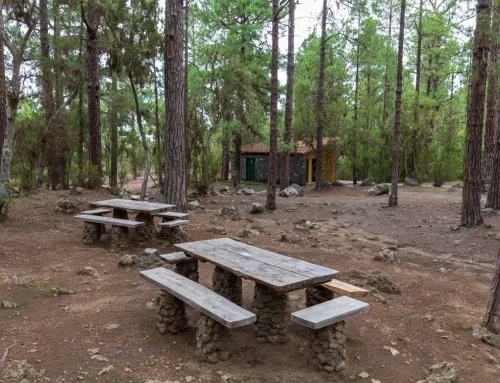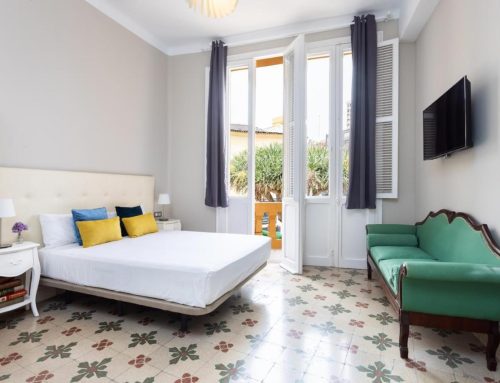Ascending Mount Teide may seem like a complicated decision. As the main point of interest in Tenerife, it is undeniable that visiting Teide is essential on your first visit to the island. However, the question arises: what is the best way to do it? Driving alone? Driving and then using the cable car? Perhaps you prefer hiking, or combining the cable car ride with a walk up to the summit. As you can see, there are multiple alternatives and a wealth of information available. Don’t worry! In this article, we will address all your concerns.
Recognized by numerous tourists, Teide National Park stands out as one of the most amazing destinations in the Canary Islands. Additionally, we can tell you that simply driving to Teide via one of Tenerife’s roads is like transporting yourself to another world, similar to the Moon or Mars. Rising to 3,715 meters above sea level, Teide is the highest peak in Spain, and its panoramic views will surprise you. Get ready to enjoy a unique and unforgettable experience.
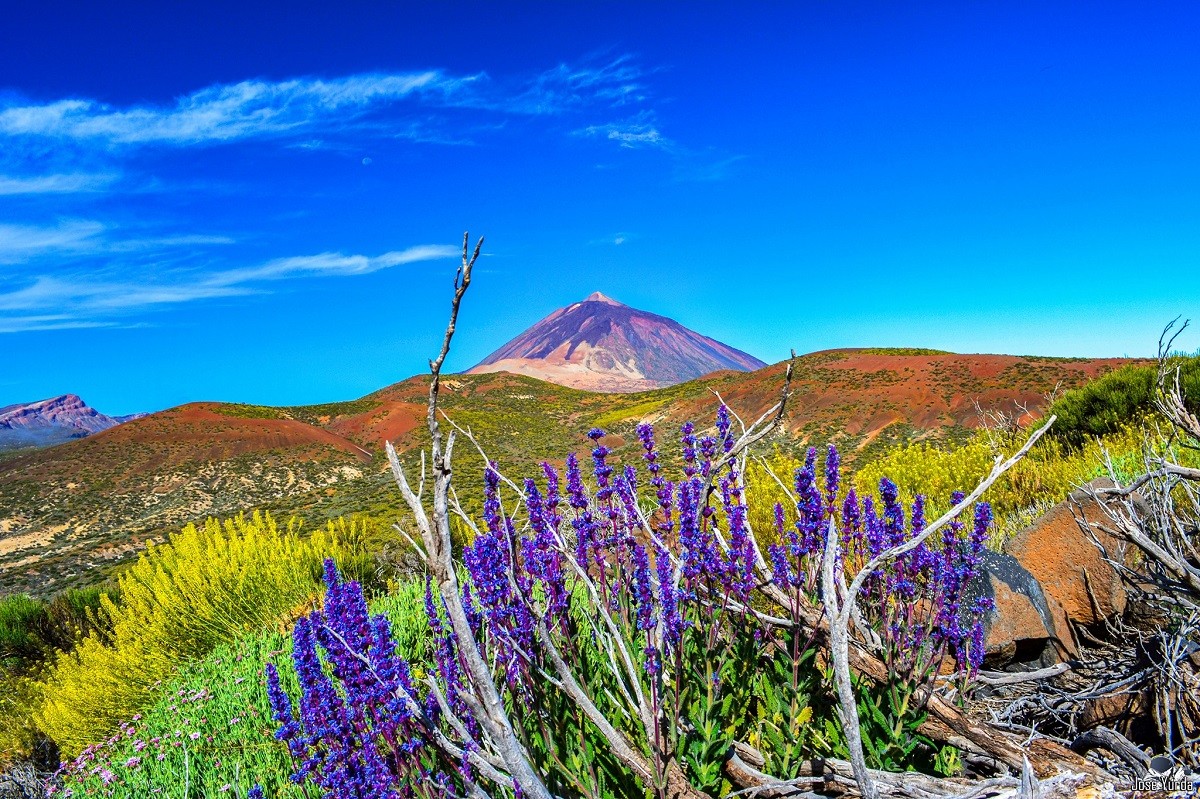
As promised, we present all the alternatives to visit Teide, from hiking to exploring the park by car, including the ascent to the summit of Teide, for which an exclusive permit is required. Additionally, you will find recommendations and a map to help you make the best decision. Let’s get started!
How to Climb Teide: Different Options
As mentioned earlier, there are numerous ways to ascend Teide, and the ideal option will depend on your available time, personal preferences, and, of course, your physical condition. Below, we will delve into each of them, but to give you a general idea, these are the most common ways to visit Teide:
- Climb Teide by car: This is the easiest way. You just need to rent a car and you can reach the slopes of Teide, at an altitude of 2,356 meters. There are 4 main routes that start from different areas of the island, and you can stop at various viewpoints and enjoy the almost Martian landscape. You can also do some trails if you feel like it, with the Roques de García being the most well-known and one of the easiest and most scenic. In fact, you can join a simple guided hiking route from here or a free tour.
- Climb Teide by car and take the cable car: This option adds the advantage of reaching 3,555 meters, where the cable car will take you in just 8 minutes. Of course, from here you will get incredible views of the national park and, if you want, you can practice some of the hiking routes to see other panoramas. The most well-known is number 10, which will take you to the peak of Teide, but keep in mind that a permit is required. It is advisable to book the cable car trip in advance and consider that it can be canceled if the weather conditions are not ideal.
- Climb the Peak of Teide: If you want to reach the highest point in Tenerife (and in Spain), you can do so from where the cable car leaves you on a walk of about 30 minutes to the top. This is the Telesforo Bravo trail or number 10. The permit is requested for free, but it sells out several months in advance. If there are no permits available for the dates you want to climb the Peak of Teide, you can book this excursion from the south of the island or this one from the north, which include the cable car, the permit, and you will go with an official guide.
- Climb Teide on foot: This option allows you to do so from any point on the island, even from the coast, but keep in mind that it usually takes at least 2 days. Another option is starting from Teide National Park. This second alternative is, obviously, more comfortable but more demanding. One of the most common routes is the Montaña Blanca (approximately 6 hours to climb the Peak of Teide), but you can also do the Regatones Negros (approximately 7 hours, but tougher).
- Visit Teide with an excursion: If you are not going to rent a car or prefer to learn everything with the help of a guide, there are many ways to visit Teide. We will talk about them in detail later, but among the most popular are this one (with pickup in Puerto de la Cruz and La Orotava and including a cable car ride to Teide) or this one (same but from the south of the island).
- Climb Teide by bus: This is the most inconvenient option because you depend 100% on the bus schedules, but they make stops at the cable car and where the Montaña Blanca trail begins, for those who want to climb Teide on foot. Lines 342 and 348 make this route from the south and the north, respectively. Check schedules here.
Although we hope you have a clearer idea now, if not, don’t worry, as we will delve into the different ways to climb Teide in the following sections.
How to Visit Teide by Car and Possible Activities
If you prefer to travel independently, the most recommended option is to ascend Teide by car. Additionally, since distances in Tenerife are quite extensive, the best way to explore the island is by renting a car, thus avoiding having to rent one solely to visit Teide. Adding to this, by booking in advance, rental costs are quite affordable, as well as fuel costs, making this the most convenient alternative.
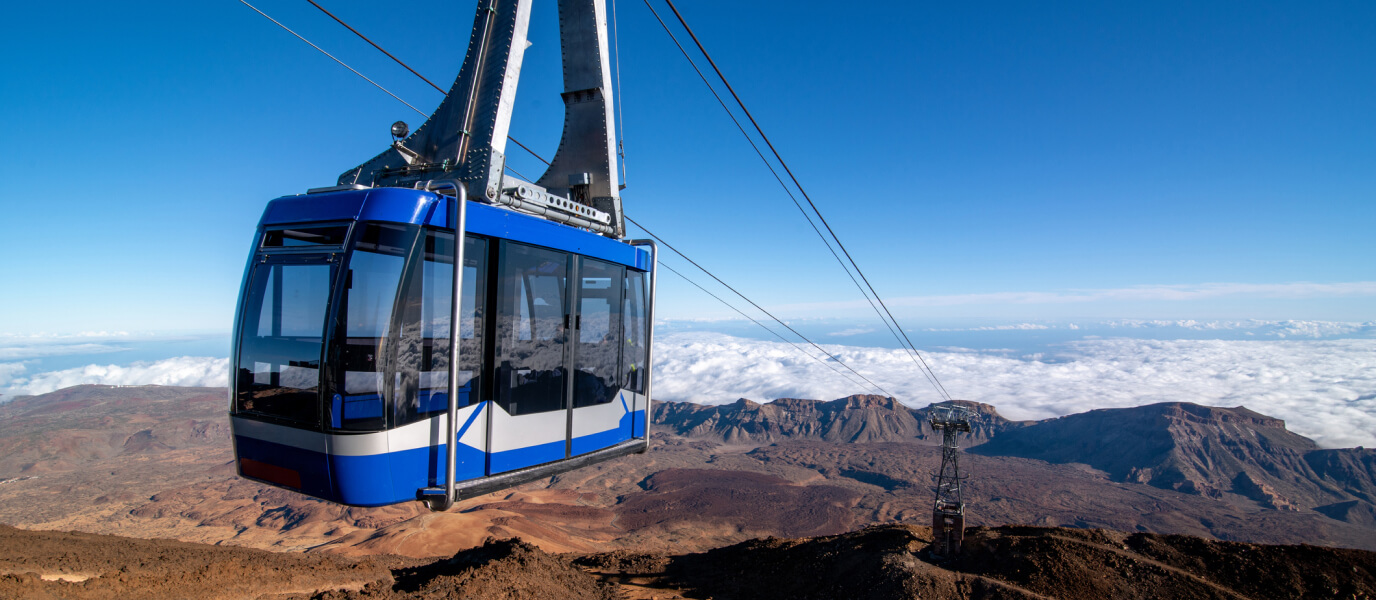
The TF-21 and TF-38 roads are fully paved and traverse the heart of the park, offering impressive views, parking areas, and opportunities to enjoy the surroundings. From these roads (as well as from TF-24, which provides access from the north of the island), numerous hiking routes depart.
Best Road to Climb Teide by Car
The most suitable road to ascend Teide by car will vary depending on your location on the island, but to summarize:
- From the north: If you are in Santa Cruz de Tenerife, La Laguna, or the surrounding areas, it is best to take the TF-24, via Esperanza. This is easily one of the most beautiful roads on the island, as you will get views of Teide with the Orotava Valley, often covered by that sea of clouds you’ve surely seen in photos. We recommend stopping at the Chipeque Viewpoint, one of the most spectacular, and at the Ayosa Viewpoint.
- From the northwest: If you are around Puerto de la Cruz or La Orotava, drive via TF-21. It is a shorter route and somewhat less scenic.
- From the southwest: TF-38 is a wide and picturesque road. In our opinion, the one coming from Esperanza is the most beautiful to climb Teide by car. If you are around the Los Gigantes or Arona area, it might be an option.
- From the southeast: There are also several roads that connect to Vilaflor. Keep in mind that this one has more curves.
What to Do at Teide
You have climbed Teide by car, and now what? In addition to enjoying the views along the way, there are multiple activities you can do. Below, we summarize the most common ones:
- Take the cable car: comfortably reach 3,555 meters. We will explain more about this below.
- Ascend to the Peak of Teide: both by cable car and on foot, you can reach the summit. As mentioned before, a permit is required. We will delve into this topic later.
- Roques de García Trail: you probably recognize this image, as Roque Cinchado and the impressive Teide in the background were featured on the old 1,000-peseta bill and represent one of the most beautiful views in the park. Therefore, it is practically essential if you visit Teide. You can simply admire it from the start of the route or complete the full trail, which is 3.6 kilometers long. This hike usually takes about 1.5 hours and is best started from the La Ruleta viewpoint. It is a relatively easy route that allows you to enjoy the landscapes of this magical place. To better understand the ecosystem around you, we recommend joining this free tour, which starts from Roques de García and lasts only two hours.
- Hiking Routes: there are many for all levels. We would go into too much detail, but some of the most well-known are the Seven Cañadas Route, the Pico Viejo Route (from La Rambleta, where the cable car leaves you) or the Guajara Route.
- Juan Évora Ethnographic Museum: focused on the life of the last resident of Las Cañadas, who maintained the customs of the traditional post-war lifestyle. Free admission.
- San José Mines: an excellent stop if you climb Teide by car from the north, where you can observe a Mars-like landscape with the volcano in the background and pumice stone piles from the Montaña Blanca eruption.
- Teide Observatory: explore one of the best observatories with the guidance of an expert, who will show you how the telescopes work. You can book your visit from this link.
- Enjoy Teide at Night: an excellent option is to visit Teide at sunset, when there are fewer visitors, and combine it with a star observation session. Thanks to the almost complete absence of light and the climate, which is usually clear, the experience is incredible, especially if you are accompanied by a guide and use professional telescopes. We suggest booking this activity or one of these guided hiking routes, simple but enriching.
Excursions to Visit Teide
If you prefer not to climb Teide by car and opt for an excursion, the options are virtually limitless. You can choose between jeep, quad, bicycle, at sunset… It’s up to you! Below, we present some of the most highly rated excursions by travelers:
- Pickup in La Orotava or Puerto de la Cruz and access to the cable car
- Excursion to Teide from Puerto de la Cruz (without cable car)
- Pickup in the south of the island (from Los Gigantes to El Médano) and access to the cable car
- Excursion to Teide from the south of the island (without cable car)
- Quad Excursion to Teide: if you have a type B driver’s license, you can reach the park by driving your own quad. Each vehicle can carry 1 to 2 people, and the excursion includes pickup from the south of the island.
- Jeep Safari through Teide National Park: explore Teide from the Las Américas area with this guided 4×4 route. The departure is from Guía de Isora, offering a very comprehensive tour of the park.
- Jeep Safari through Teide and Masca: similar to the previous one, but longer in duration, as it includes a visit to the Masca ravine.
- Bicycle Tour through Teide: with pickup in the south of the island (from Los Gigantes to El Médano), you will pedal towards Teide from the La Camella area accompanied by a guide. The tour lasts between 5 and 6 hours.
- Astronomical Tour of Teide from the north of Tenerife (pickups in Puerto de la Cruz, La Orotava, and Santa Úrsula): includes transportation, visit to Teide Observatory, sunset, and guided sky observation with telescopes.
- Astronomical Tour of Teide from the south of Tenerife (pickups from Los Gigantes to El Médano): similar to the previous one, but with pickup in the south.
For more information about these and other tours, visit our article on the best excursions in Tenerife.
How to Take the Cable Car to Teide
Within the National Park, you have the option to ascend Teide via the cable car, not to the summit, but to its slopes, at 3,555 meters above sea level. The journey in its two cabins, with a capacity of up to 44 people, lasts just 8 minutes and will take you to the Rambleta Viewpoint, from where you can enjoy views of Siete Cañadas, Ucanca Valley, and Montaña Guajara.
Additionally, this point is the start of three trails:
- Number 10 or Telesforo Bravo: which we will discuss later, as it requires a permit and takes you to the Peak of Teide.
- Number 11 or Fortaleza Viewpoint Route: heads northwest, has medium difficulty, and in about 30 minutes you will reach this viewpoint with views of Orotava Valley and Montaña Blanca. This is the route you should take if you wish to descend Teide on foot. It can be done freely and does not require a permit.
- Number 12 or Pico Viejo Viewpoint Route: one of the most popular and spectacular routes, as it takes you to contemplate the 800-meter diameter crater of Pico Viejo, located at over 3,000 meters in height. If the day is clear, you can see all of southern Tenerife, La Gomera, El Hierro, and La Palma. The hike is of medium difficulty and lasts approximately 30 minutes. Like the previous route, it can be done freely and does not require a permit. If you wish to descend on foot from Teide, you can also go down to Roques de García via the Regatones Negros trail (number 23), although keep in mind that it is a demanding route that will take you between 5.5 and 6 hours.
At the base of the cable car, there is free parking, and it is advisable to arrive about 20 minutes before to the ticket office, as it can sometimes be difficult to find parking. If you do not arrive at the time indicated on your ticket, you will lose access.
You should consider that it is relatively common for the cable car to be unable to operate due to wind. However, if you have booked your ticket online, you will receive a notification by email or SMS around 8:30 on the day of your planned ascent in case of cancellation.
If you check the weather forecast and see that there will be a lot of cloudiness, it is possible to make up to three changes to tickets within a year. You can modify the time or date, or cancel free of charge until 6:00 PM the day before the reservation. Still, it is better to be sure and read the terms and conditions carefully.
If you are considering taking the cable car to Teide with children, keep in mind that children under 3 years old cannot use it.
Schedules to Take the Cable Car to Teide
The operating hours of the Teide cable car vary depending on the time of year, but they generally operate from 9:00 AM to 6:40 PM, with the last descent 10 minutes before closing and the last ascent one hour before. You can check the specific schedules here.
There is also the option to take the cable car to Teide at sunset. It is a more expensive option, but it will allow you to enjoy a magical sunset. You can book this excursion here.
Cable Car Prices
The prices to take the cable car to Teide are as follows:
- Round trip for adult non-residents in the Canary Islands: €40
- Round trip for adult residents: €16
- Round trip for minor non-residents: €20
- Round trip for minor residents: €10
- One-way trip (either ascent or descent) for adult non-residents: €22
- One-way trip for adult residents: €11
- One-way trip for minor non-residents: €11
- One-way trip for minor residents: €5.50
Children aged 3 to 13 years are considered minors.
For adults who wish to add an audio guide, an additional €3.50 must be added to the cable car price.
If you only want to purchase the cable car ticket without including transportation, you must do so on the official Volcano Teide website. It is also possible to buy it at the ticket office, but there might be no availability or long queues to wait in.
For excursions with pickup and guided tours, you can book this one with pickup in La Orotava or Puerto de la Cruz, this one with pickup in Santa Cruz de Tenerife, or this one with pickup in the south of the island.
How to Climb the Peak of Teide
You are probably now wondering how to ascend the Peak of Teide. Reaching the summit is a dream for many and, moreover, it is easier than you imagine. The hike from the upper station of the cable car does not present major complications and will take you between 30 and 40 minutes. Due to the altitude, it is recommended to proceed at a steady pace, although it is a well-maintained and easy trail to complete.
From the summit, if the day is clear, you will enjoy panoramic views of almost the entire island and the rest of the Canary archipelago, in addition to experiencing the thrill of being on the highest mountain in Spain.
What is the main difficulty in climbing the Peak of Teide? Obtaining permits. These are limited to 200 daily slots, distributed in shifts of 50 people: from 9:00 AM to 11:00 AM, from 11:00 AM to 1:00 PM, from 1:00 PM to 3:00 PM, and from 3:00 PM to 5:00 PM.
Permits can be requested for free at this link, but keep in mind that they sell out several months in advance (up to 3 or 4 months before). Therefore, unless you plan well in advance, you are unlikely to get one.
How to climb the Peak of Teide if you have run out of permits? It is impossible to do so illegally, so you must rely on the services of an agency. Official guides have a quota of permits, which makes it possible to ascend the peak even with little notice. To do so, you can book the following excursions:
- Excursion to the Peak of Teide with pickup in the south of the island (from Los Gigantes to El Médano) and access to the cable car
- Excursion to the Peak of Teide with pickup in Puerto de la Cruz and access to the cable car
Although these options are more expensive than obtaining the permit on your own, you will learn a lot about the national park while being accompanied by an expert guide who will provide you with all kinds of information and, best of all, you can ascend the Peak of Teide even if you have not obtained the permit directly.
Don’t forget to bring your ID or passport, as you will have to identify yourself at the booth at the start of the trail. This way, they will verify that the permit is valid for you.
How to Climb Teide on Foot
If you are accustomed to doing long hikes, you also have the option to ascend Teide on foot. As mentioned earlier, the most common route is Montaña Blanca or Trail number 7 (which then connects with route number 10 towards the Peak of Teide). You should keep in mind that it is a very demanding route, with slopes of up to 60% and an elevation gain of 1,300 meters to the summit.
It is most advisable to split the stage into two, staying at the Refugio de Altavista. However, this is currently closed until further notice, so if you decide to climb on foot, you should start early, as it will take you between 4.5 and 5 hours. Additionally, for the last part of the journey, from La Rambleta to the Peak of Teide, you will need to have obtained the permit in advance. You can find more detailed information about this route on Wikiloc.
At the end, you can walk back to the start of the trail (which will take you between 3 and 4 hours, depending on your pace) or use the cable car. Don’t forget to check the operating hours.
At the start of the Montaña Blanca trail, there is a parking area, but it is advisable not to leave valuables, as it is not monitored and some thefts have been reported. You could also choose to take the bus up to here, but keep in mind that you will depend on return schedules.
How to Get to Tenerife
As you can see, ascending Teide is one of the must-do activities on the island, so you are surely eager to get there. The best way to do so is by booking a flight to Tenerife in advance. Although Tenerife North Airport receives more flights from the mainland, we also suggest comparing prices with flights arriving at Tenerife South Airport. From both airports, you can access Teide.
On the other hand, the best way to climb Teide is by doing so in a rental car, as this way you can choose the route that suits you best and have flexibility with schedules. However, if you prefer not to worry about anything and want to go accompanied by a guide who provides all the information about the park, the ideal option is to sign up for one of the numerous excursions available to visit Teide. These are the most highly rated by travelers:
- Excursion with transportation from La Orotava or Puerto de la Cruz, with expert guide and cable car ascent
- Excursion to Teide from Puerto de la Cruz (without cable car)
- Pickup in the south of the island (from Los Gigantes to El Médano) and access to the cable car
- Excursion to Teide from the south of the island (without cable car)
Tips for Climbing Teide
Below, we offer some tips for ascending Teide based on our experience:
- Plan in advance: Book your ascent to Teide in advance, whether you plan to use the cable car or reach the summit on foot. Permits sell out quickly and, in many cases, so do cable car tickets.
- Check the weather: Verify the weather conditions before climbing Teide to avoid a wasted trip. If you have booked the cable car, you can call to check if conditions are favorable and, if not, change the date.
- Avoid peak hours: The middle of the day is usually the busiest, so we recommend visiting Teide early or late in the day. If you choose the latter option, don’t miss doing some star observation activity, as the skies are spectacular due to the absence of light pollution and generally clear skies.
- Safety: If you plan to ascend Teide on foot or do an extensive hiking route, it is important not to leave valuables in the car, as unfortunately, thefts have occurred.
- Food and Restrooms: At the Parador de Las Cañadas del Teide, there is a restaurant and a shop/buffet, but keep in mind that prices are high. It is advisable to bring your own food and drinks. Restrooms are also paid, unless you purchase something.
- Proper Equipment: Prepare with good footwear and warm clothing. Although temperatures on the coast are usually mild, keep in mind that you are in a high-altitude area and in winter temperatures can drop below zero, so wearing warm clothing is advisable. It is also important to protect yourself from the sun.
- Respect for the Environment: Please act as a responsible traveler and do not take anything from Teide, only your trash or a souvenir you purchase from the shops. It is completely forbidden to take rocks or stones, and you might have to return them at the airport.
- Accommodation in the Park: If you wish to witness the sunrise next to Teide or enjoy its starry skies, you must book at the Parador de las Cañadas del Teide, the only hotel located in the park. For more information, you can read this article about where to stay in Tenerife.
Map of Points of Interest in Teide National Park
To give you a clearer vision of the site and help you plan your ascent to Teide, take a look at this map we have prepared:
Hopefully, this guide on how to climb Teide has helped you plan your visit to this magical place. If you have any questions, feel free to write to us in the comments.

